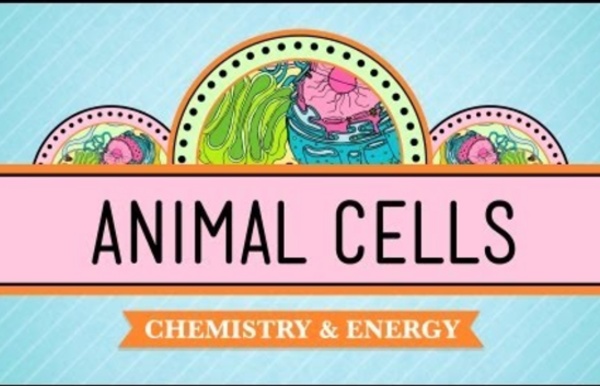



http://www.youtube.com/watch?v=cj8dDTHGJBY
Related: Topic 3: Energy Systems • Intro to Genetics DNA Structure and Function • ETLVAnabolism vs Catabolism Anabolic and Catabolic Processes Anabolic processes use simple molecules within the organism to create more complex and specialized compounds. This synthesis, the creation of a product from a series of components, is why anabolism is also called "biosynthesis." The process uses energy to create its end products, which the organism can use to sustain itself, grow, heal, reproduce or adjust to changes in its environment. Growing in height and muscle mass are two basic anabolic processes. At the cellular level, anabolic processes can use small molecules called monomers to build polymers, resulting in often highly complex molecules.
Ask A Biologist Bibliographic details: Article: Parts of the CellAuthor(s): Dr. BiologyPublisher: Arizona State University School of Life Sciences Ask A BiologistSite name: ASU - Ask A BiologistDate published: September 27, 2009Date accessed: September 12, 2018Link: A Giant-Sized History of Biotechnology Historically, biotech has been primarily associated with food (agtech), addressing such issues as malnutrition and famine. Today, biotechnology is most often associated with the development of drugs. But drugs are hardly the future of biotech. We’ve entered the Fourth Industrial Revolution (#4IR), and genetics are on a new level. Biotech is paving a way for a future open to imagination, and that’s kind of scary.
Effects of Lack of Vitamins and Minerals Human body cannot synthesize most vitamins and minerals. You are supposed to provide these nutrients to your body through healthy diet. There has been an astounding rise in the sale of vitamin and mineral supplements over the last few decades. It is good that more and more people are becoming health conscious but it also suggests that more and more people are suffering from vitamin and mineral deficiencies. Sporting performance and food Daily training diet requirements The link between good health and good nutrition is well established. Interest in nutrition and its impact on sporting performance is now a science in itself. Whether you are a competing athlete, a weekend sports player or a dedicated daily exerciser, the foundation to improved performance is a nutritionally adequate diet.
Genetics Genetics includes the study of heredity, or how traits are passed from parents to offspring. The topics of genetics vary and are constantly changing as we learn more about the genome and how we are influenced by our genes. Inheritance About Microbiology – Fungi Fungi can be single celled or very complex multicellular organisms. They are found in just about any habitat but most live on the land, mainly in soil or on plant material rather than in sea or fresh water. A group called the decomposers grow in the soil or on dead plant matter where they play an important role in the cycling of carbon and other elements.
How Your Body Uses Carbs and Fats for Energy – Enzymedica One of the timeless comparisons we are told growing up is that our body is like a machine. It needs fuel in order to power its daily functions. However, for a lot of people, that’s all they remember. What is the “fuel”? Parkway Central Biology - Honors Biology II Fall Semester 2012 Final Exam (not eligible for corrections) Spring Semester 2013 Final Exam (Multiple Choice Section) Spring Semester 2013 Final Exam (Short Answer/Problems Section) Unit 1 - Introduction to Genetics: Metaphase, Meiosis, and Mendel (Oh My!) Unit 1 Test (for test corrections) Additional Genetics Background Material Fat Fat are an essential part of our diet and is important for good health. There are different types of fats, with some fats being healthier than others. To help make sure you stay healthy, it is important to eat unsaturated fats in small amounts as part of a balanced diet.
Material for teachers The following material is designed for teachers. There are two presentations aimed at either A-Level of undergraduate students which introduce epigenetics, its association with disease and the potential for epigenetic therapy which could be used when introducing the topic; for A-Level students there is an associated worksheet that may also be of use. Additionally, there are Word documents which discuss the main issues arising from each case study and the key points to be found in each resource. A-Level material:Epigenetics A-Level presentation: Short presentation aimed at A-Level students which introduces epigenetics.